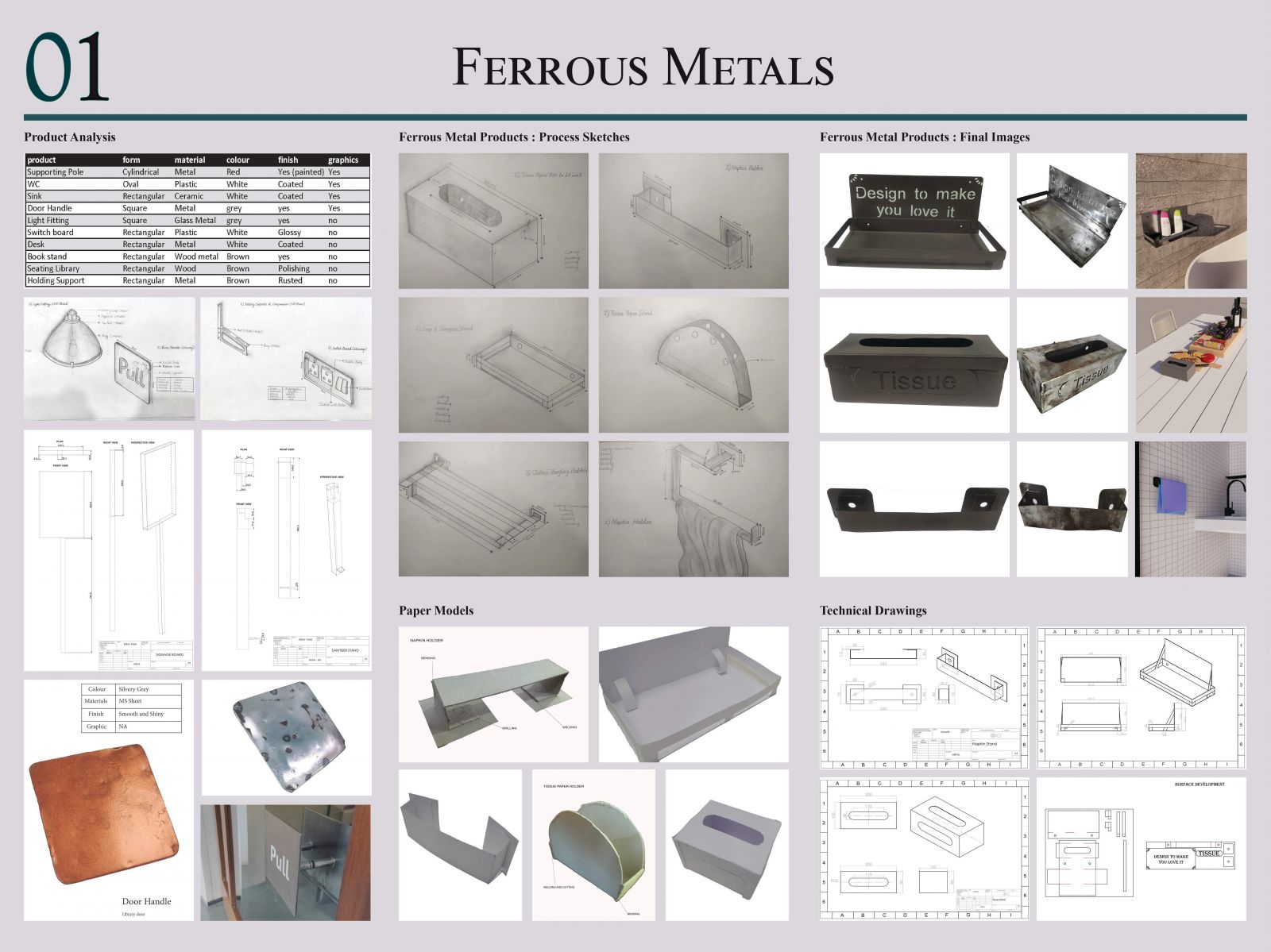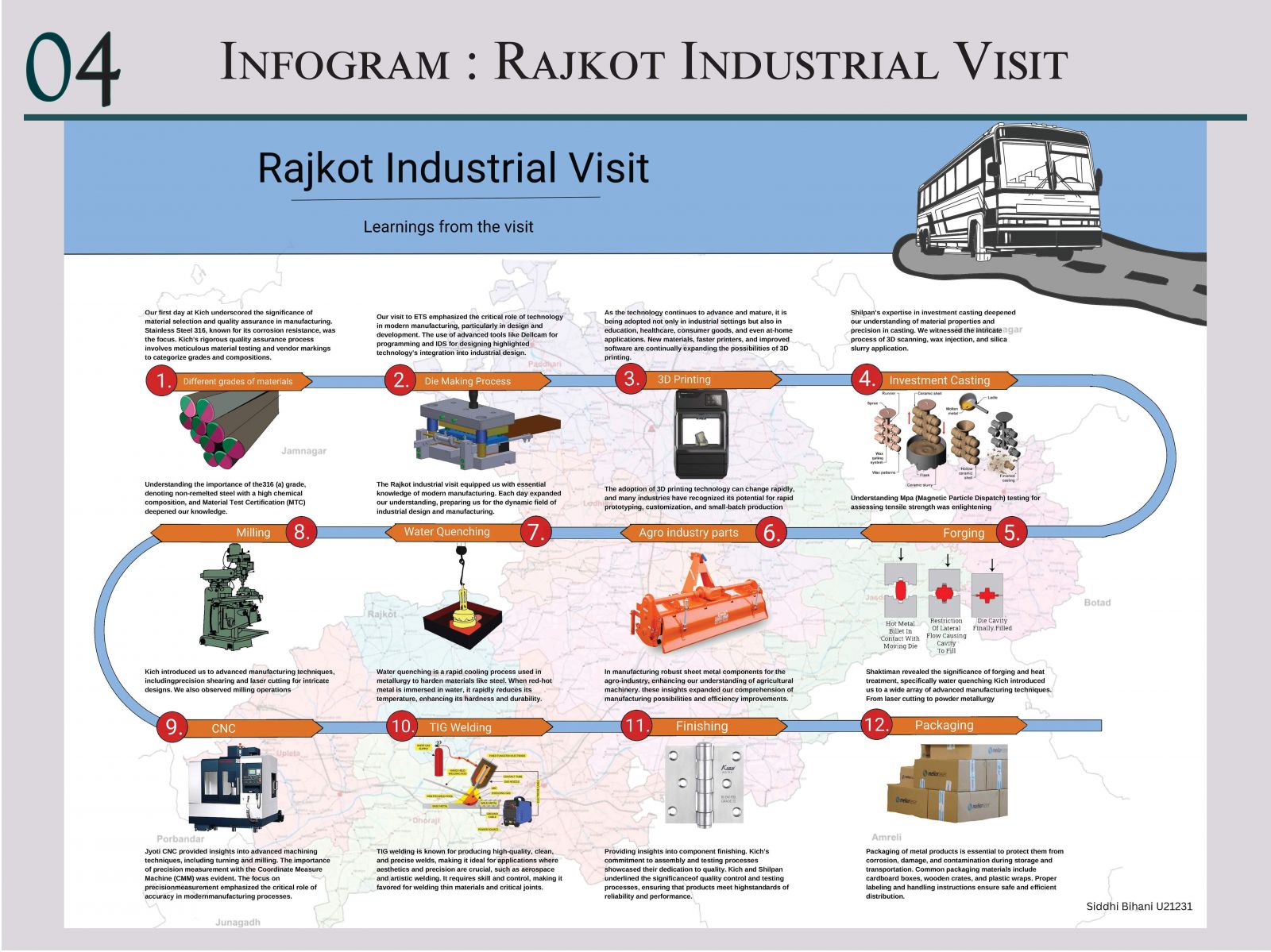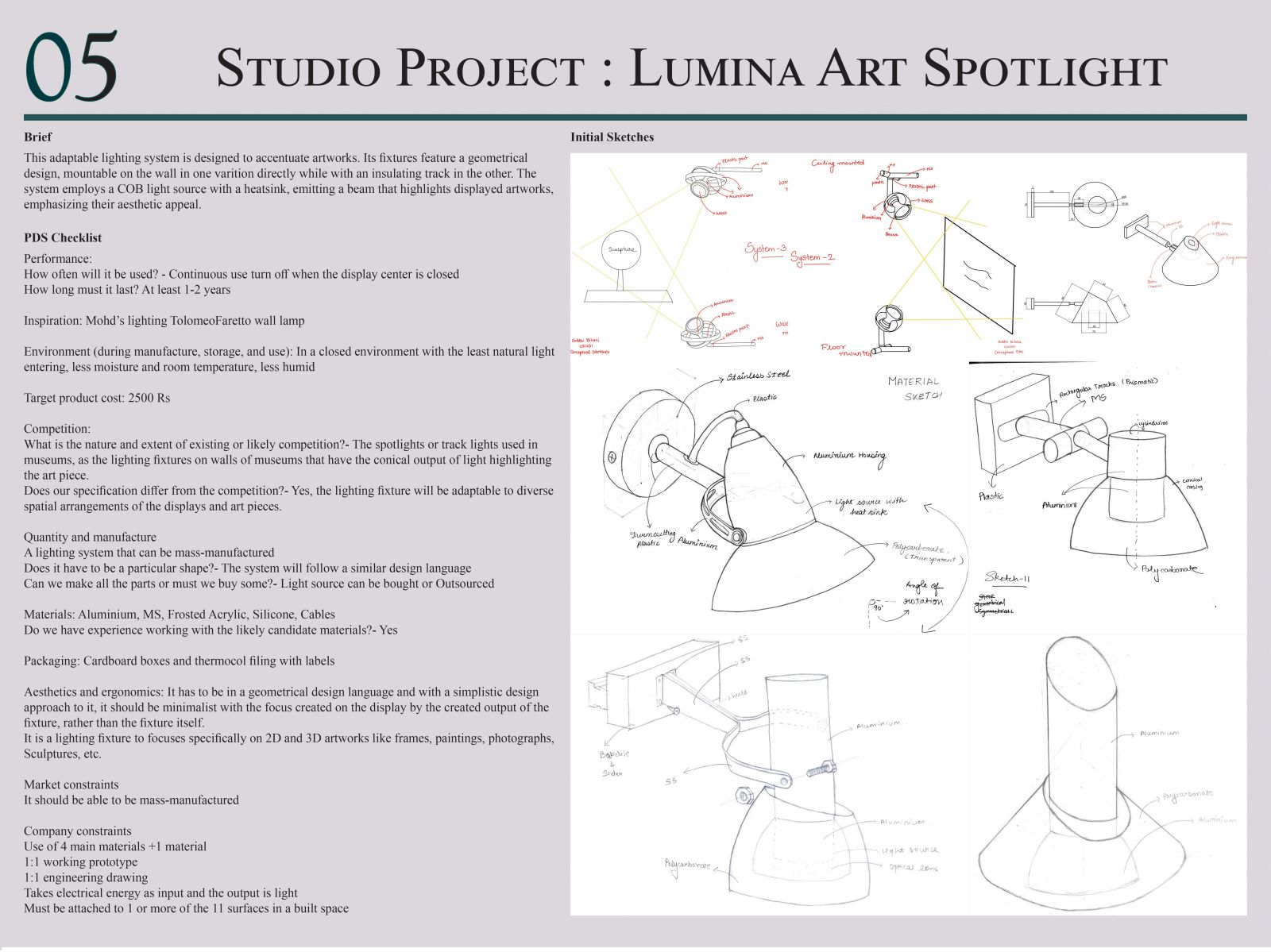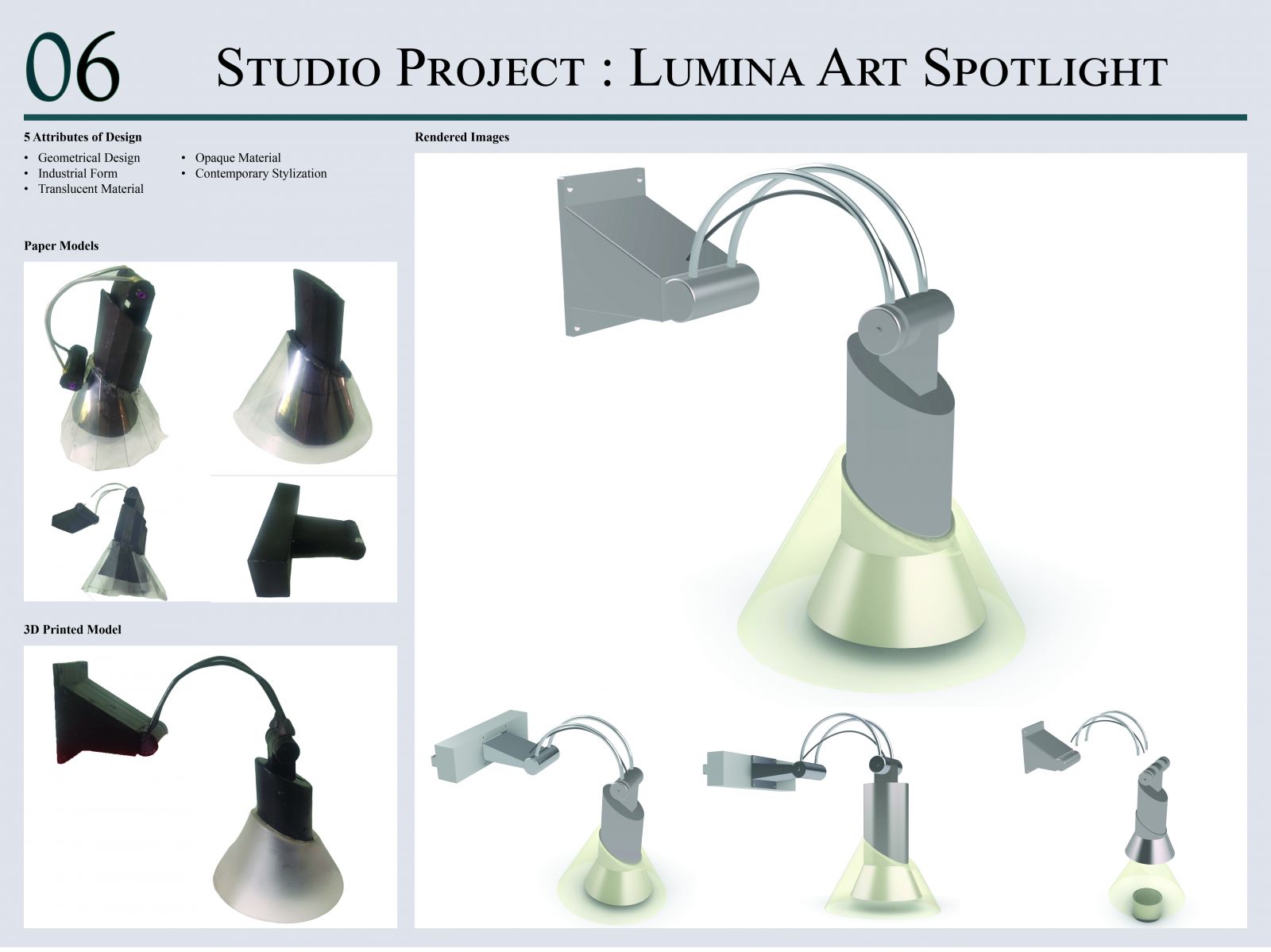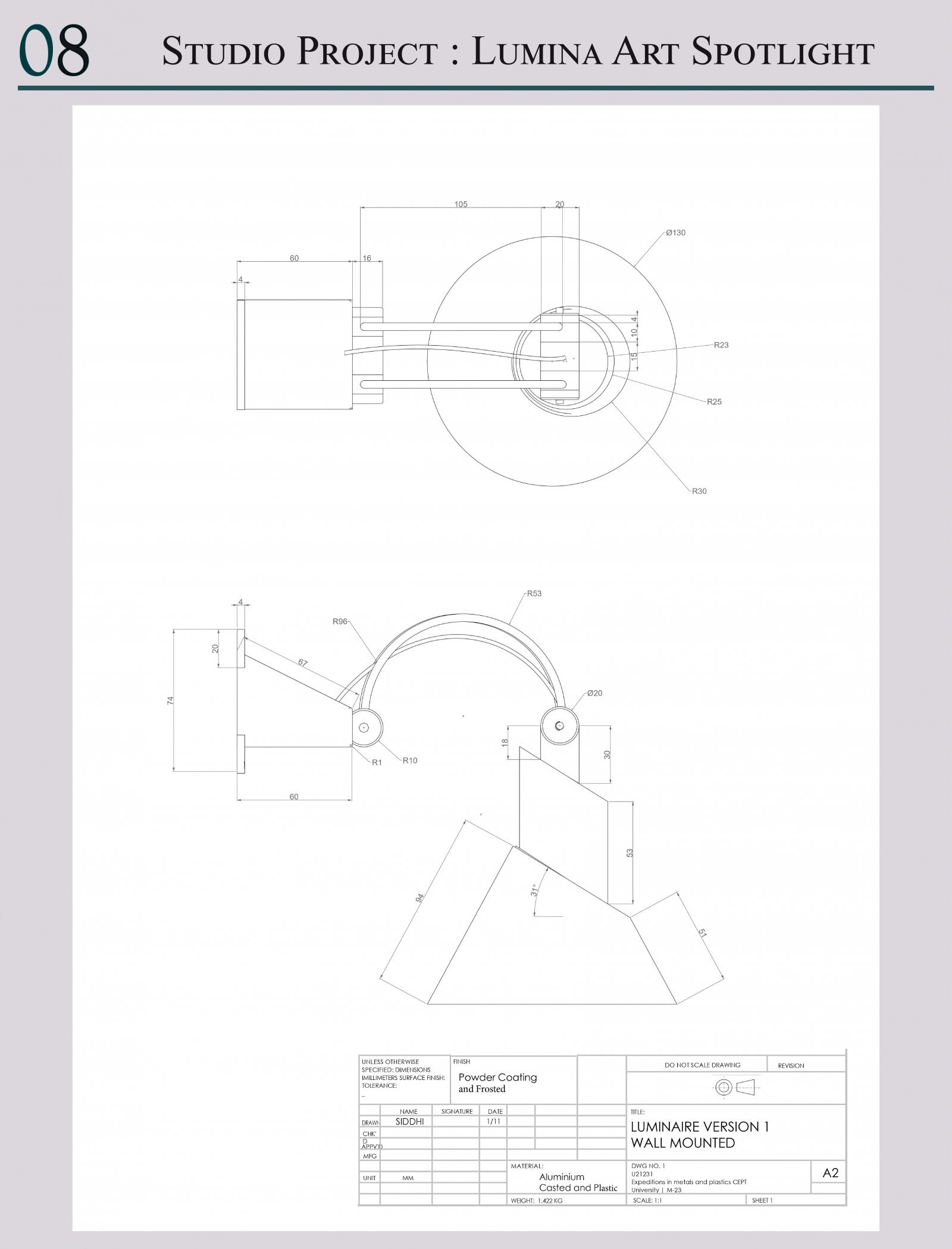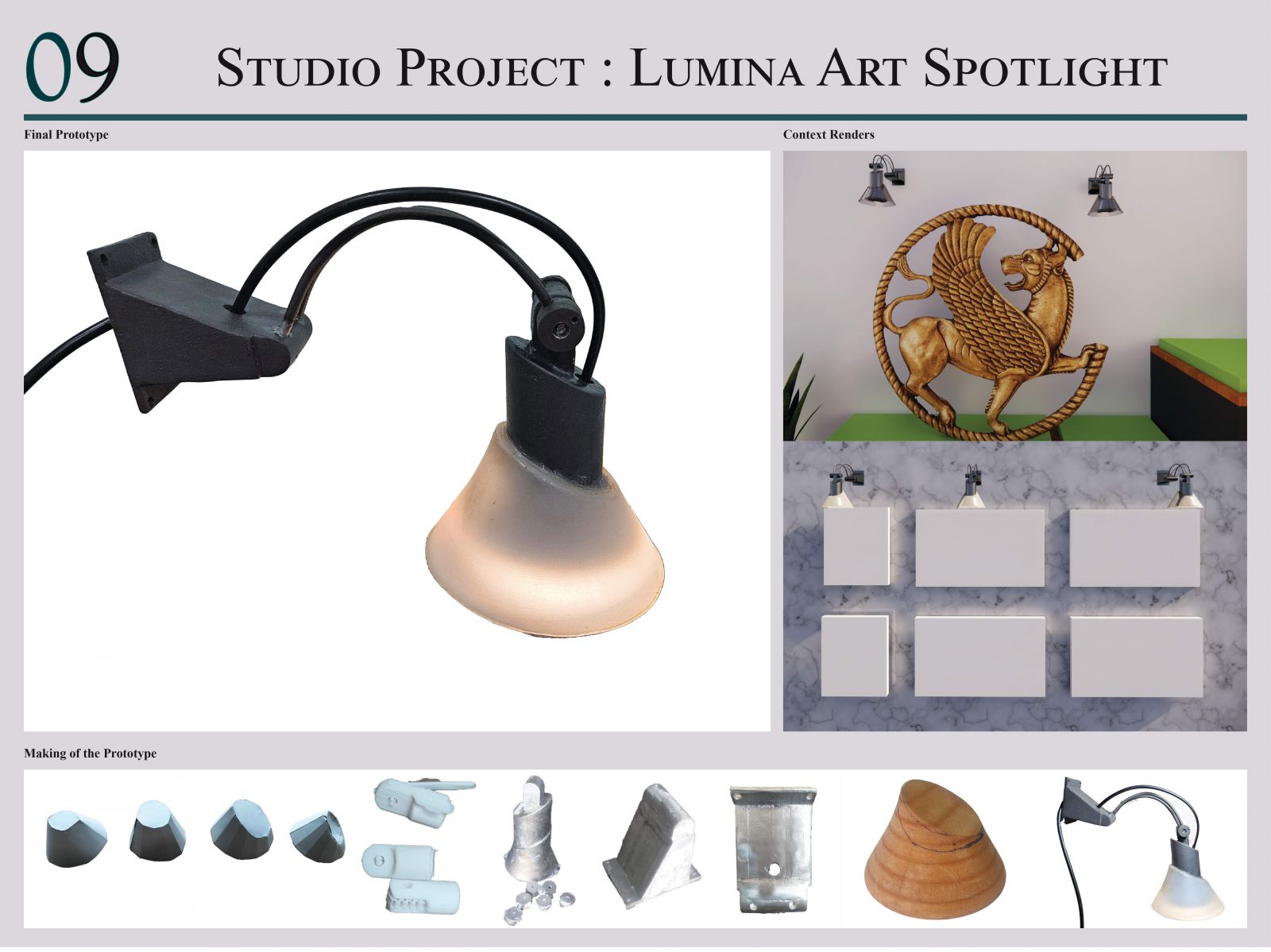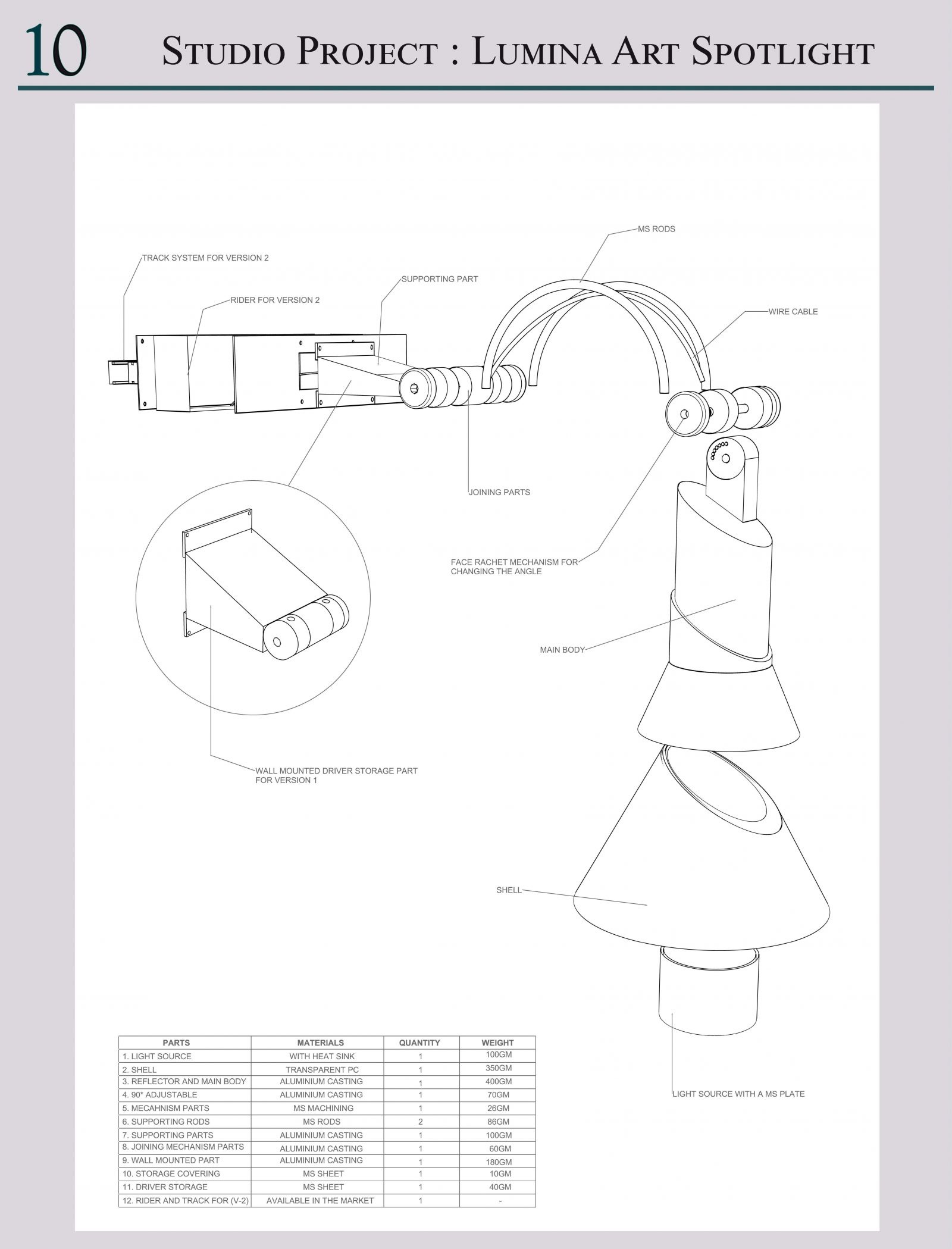Your browser is out-of-date!
For a richer surfing experience on our website, please update your browser. Update my browser now!
For a richer surfing experience on our website, please update your browser. Update my browser now!
The semester unfolded as a roller coaster ride, initiating with the scrutiny of building products to enhance our observational skills. Overcoming challenges involved delving into diverse materials like metals and plastics, and gaining hands-on experience in the workshop. Progressing through the journey, we arrived at the pivotal point of crafting an original Luminaire design tailored for a specific context. The culmination was marked by the realization of a 1:1 working prototype, employing the same materials and processes envisioned for the final product. Despite the challenges, the experience was characterized by both enjoyment and invaluable lessons. Industrial visits provided exposure to the operational dynamics of the industry world.
View Additional Work